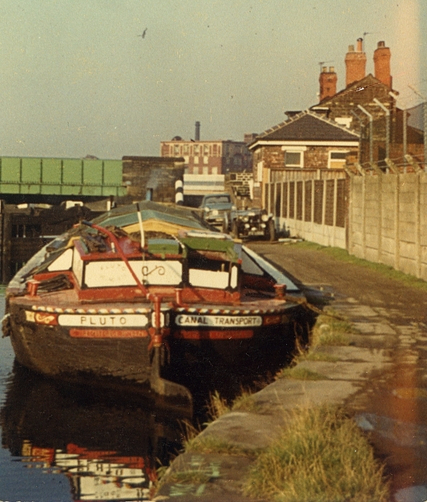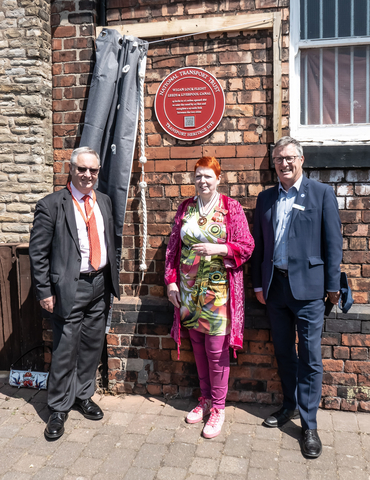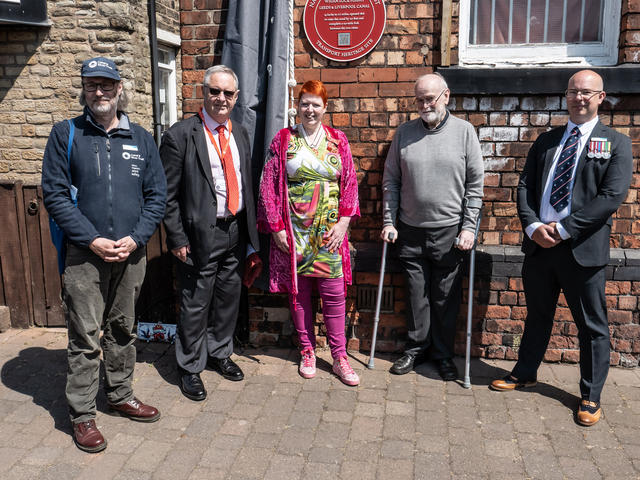
23 locks in 2 ½ miles. Opened 1816 to raise the canal by 217 feet and complete a 127-mile link between two cities.
Chapel Lane
Wigan
Construction of the Leeds & Liverpool Canal, “betwixt the East and West Seas”, began in late 1770 simultaneously near Ormskirk in the west and Skipton in the east. Within ten years there were effectively two canals, one linking Wigan and Liverpool and one linking Skipton and Leeds. After a period of inactivity, works to join these two sections recommenced in the east in 1790. By 1810 the canal had reached Blackburn and was proceeding towards the Lancaster Canal South End at Wheelton. There was just one section of the Leeds & Liverpool Canal remaining to be built – that linking the basin in Wigan to the Lancaster Canal South End above Wigan at Bark Hill. A short section of just 2 ½ miles which would nevertheless require the canal to be raised by more than 200 feet. This was done with the construction of 23 locks, today known as the Wigan Flight.
On the 3rd June 1812 the Company minutes record that the line of the canal to be constructed from Bark Hill to Wigan had been set out whilst on the 21st October 1812, the minutes include the entry “Work about to start at Wigan”.
The first set of specifications for the works share this same date – 21st October 1812 – and included for the digging of the bottom three quarters of a mile of canal from the basin on Wallgate to Warrington Road. The specifications included four locks, three bridges (including Britannia Bridge) and an aqueduct to take the canal over the River Douglas. The specifications optimistically required these works to be complete by 1st November 1813.
The contract for digging this section of canal was given to Alexander McKenzie (in fact he was eventually given the contract for digging the whole of the flight); the contract for building Pottery [Road] Bridge, Hennis [Henhurst] Bridge (now replaced), the bottom two locks (the 23rd and 22nd) and Douglas Aqueduct was given to Hiram Craven and Samuel Whitaker; the contract for locks 21 and 20 and for Britannia Bridge was given to Messrs Withnal and Wilson.
Alexander McKenzie had earlier worked on the Forth & Clyde Canal under engineer Robert Whitworth coming down to work on the Leeds & Liverpool Canal as a cutter around 1790 when Whitworth took up the post of engineer for this canal. By 1806 he was a contractor in his own right, taking on a section at Rishton, and later at Church, Blackburn and Wheelton.
Craven and Whitaker, masons from Keighley, had previously built bridges across the Canal east of Blackburn. John Withnal was also responsible for building several bridges and culverts near High Wheelton.
The next set of specifications were published on the 10th February 1813 for six locks (actually eight locks were let) and three bridges near Springs to be completed (again optimistically) by 1st June 1814. This would seem to relate to the top eight locks along with Kirkless Hall, Cale Lane and Withington Lane Bridges. Works were let in two lots to Thomas Ashcroft and Messrs Taylor & Hardy.
Locks 83 (the 19th lock) to lock 78 (the 14th lock) along with Rose Bridge were let on the 12th May 1813 to Messrs Taylor, Heaton, Hardy and Lancaster and to Messrs Frost and Mason. Finally locks 77 (13th lock) to lock 73 (the 9th lock) and Peel Hall Bridge were let on the 9th June 1813 to contractors unknown.
The first progress report submitted by company’s engineer, James Fletcher, was recorded in the minutes on the 24th April 1814 when “digging New Springs to Wigan in great forward state and masonry for lockage commenced at Lancaster line of canal near New Springs”. There followed a report on each lock, numbered from top lock downwards:
“locks 1 & 2 ready for masonry, 3 & 4 nearly finished, 5 preparing foundations, 6 & 7 three quarters finished, 8 to 13 stone in part prepared, 14-15 forward state, 16, 17, 18, 19 stone in party prepared., 20 nearly finished, 21 forward state, 22 cannot begin till aqueduct over Douglas is nearly finished which undertaker has late neglected, 23 nearly finished.”
At this time there were 40 masons, 36 quarrymen, 48 diggers, 24 horses and 16 carts working on the line.
Fletcher’s next report came on the 12th September 1814:
“lock no.1 is nearly finished, no. 2 ready for masonry, no. 3 nearly finished, no. 4 getting stone out of it, nos. 5,6 & 7 in great forwardness, no. 8 ready for masonry, 9 half finished, 10 in digging, 11 & 12 foundations got in, 13 digging and stone in part done, 14 & 15 masonry about 8 feet high, 16 & 17 digging and stone part prepared, 18 about half finished, 19 foundations put in, 20 & 21 finished, 22 stone part prepared, 23 finished, and the aqueduct over the Douglas has got the arches nearly turned and going on well.”
There was by now an increase of people (and horses) on the ground: 65 masons, 125 diggers, 36 horses, 18 carts, perhaps reflecting a slower progress than had initially been projected.
Fletcher reported on the 10th April 1815:
“beginning at no.1 which wants the coping and bridge arch finishing, and number two is three-fourths finished, number three wants the coping, four putting in the bottom sill and pitching, five ready for the coping, six, seven and eight three-fourths finished, nine finished, ten to twelve more than half done, thirteen four feet above bottom, fourteen ready for the coping, fifteen half done, sixteen and seventeen but little done at, eighteen and nineteen three-fourths finished, twenty and twenty one finished, twenty two putting in bottom, and twenty three finished, also the aqueduct ready for the battlement, the above masonry has been much delayed for the last three or four months owing to the very wet weather but is now in a fair way of getting on rapidly.
The carpenters work for eleven locks is framed and top gates for fifteen locks, also gates for several other locks will be ready in a few weeks, the remainder will be got ready as early as wanted.”
The final progress report was made on the 15th September 1815:
“From the statement of the East end of the line [i.e. regarding works at Wheelton] I will pass over the Lancaster Canal to the top part of the west end of the line near Kirklees from where locks have been regularly numbered down towards Wigan, the following of which numbers may be considered in a finished state, all but some little coping, viz Numbers 1, 2, 3, 6, 7, 8, 9, 10, 11, 14, 19, 21, 22 and 23 finished. The digging to which is part finished and the remainder following up as fast as possible.
Numbers 4, 5, 12 and 13 will require a month to finish them, 15 is nearly finished, 16, 17 and 18 will take from 5 to 6 weeks, the digging to which will also be sufficiently forward.
The carpenters work for the above masonry is as follows: top and bottom gates put into ten locks, bottom gates framed for seven locks more, and top gates for eight locks more. Timber and scantling part worked in the yard for three locks, the timber for the other three locks is wanting, also for a number of oak thresholds, and levers, and about 2000 feet of deal balk for the levers etc.”
Fletcher concluded his report by stating that he expected that all works would be completed by the 1st January 1816, but he recommended a delay in opening the canal to allow newly constructed embankments the opportunity to settle.
On the 21st October 1816 the minutes record “Canal open, company’s barge and Union Company of Traders boat proceeded from Leeds to Liverpool, arriving on the 23rd”.
The completion of the Wigan Flight marked the completion of the Leeds & Liverpool Canal, a project that had started 46 years before.
The opening of the canal on this day was accompanied by demonstrations of joy, the discharge of cannon, military bands, thousands of spectators, and dinner-dances for the VIPs. The Hull Packet newspaper wrote “This work, perhaps the most stupendous ever undertaken in this country, is now completed. This canal passes through the English Appenine, a stubborn and untractable region, and connects St George’s Channel with the German Ocean”.

PLUTO - a barge berthed at Lock 82 where the Red Wheel plaque is mounted. The photo dates from 1975. Pluto was built in 1939 in Wigan as timber boat for the Canal Transport Ltd and was later renamed Denise.
The Red Wheel heritage plaque was unveiled on 8th June 2023 by Deputy Lord Lieutenant Melanie Bryan OBE and Canals & Rivers Trust Chief Executive Richard Parry accompanied by NTT Deputy Chairman Jerry Swift


Photo credits: David Dixon (cc-by-sa/2.0); David Dixon / Leeds and Liverpool Canal, Lock #87 at Wigan; David Long / Down the Wigan Flight-04; Jerry Swift & Barrie Pennington , with thanks.